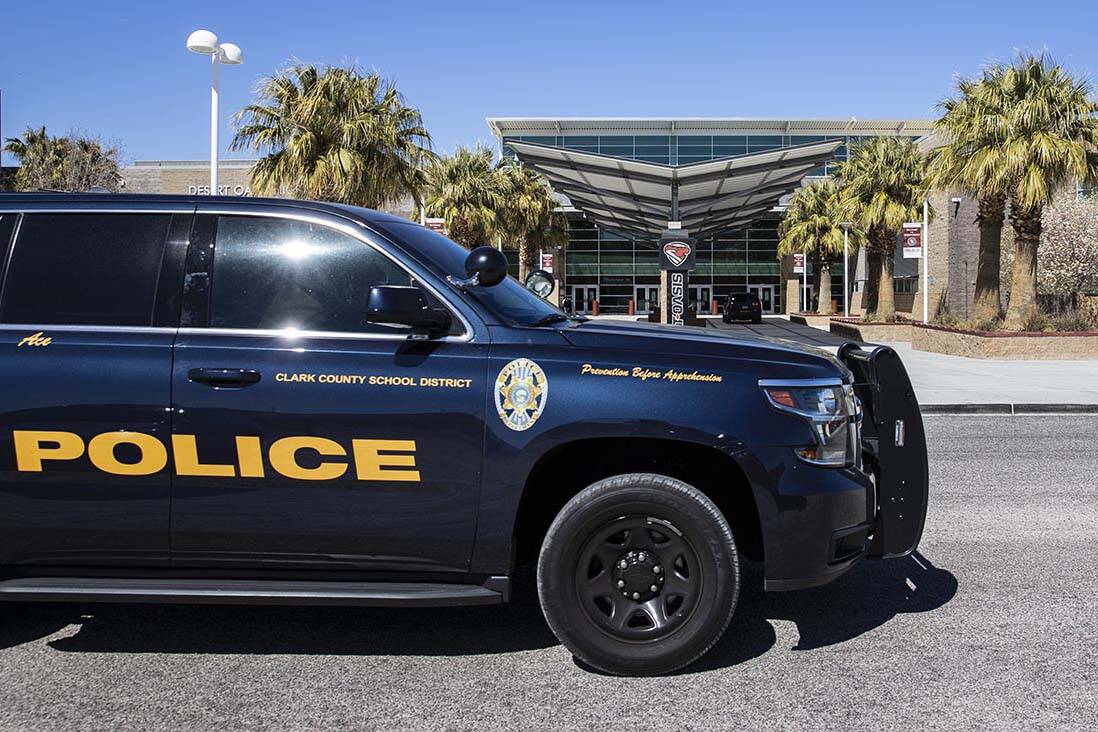VICTOR JOECKS: CCSD violence won’t stop until this changes
Top Clark County School District officials aren’t stressed about school violence, because arrests and expulsions are down. Yes, that’s as backward as it sounds.
Desert Oasis High School is an example of how out-of-control violence harms many local schools. Students there experienced a hard lockdown on Wednesday and Thursday last week. Shane Young, a senior at Desert Oasis and student council member, said he saw almost a dozen fights on campus — in a week.
“Students are scared, honestly,” he said. “I have friends who suffer from anxiety and had panic attacks in class. No one wants to go back to school until we see some change.”
On Friday, mostly empty classrooms are exactly what happened. After threats on social media, many kids stayed home. Students on campus estimated that just 20 percent of kids showed up. Not a lot of learning happening at Desert Oasis last week.
Cody Leamy, a 15-year-old at Desert Oasis, identified the cause of the problem. “Up the police enforcement and enforce more rules,” he said. “The kids that are getting in trouble aren’t getting any consequences. My parents are very worried.”
They should be worried, because lax discipline is the district’s plan. The school board held a meeting last Thursday on school violence. There was some information of how violent acts have increased. But there was so much talk about “bright spots” that you would have thought you had stumbled into an astronomy lecture.
“This presentation will have several bright spots,” John Anzalone, an assistant superintendent, said. One example was a greater than 50 percent reduction in discretionary expulsions compared to fall 2017.
A subsequent presentation showed stunning decreases in the number of juveniles referred by school police to the juvenile justice system. In 2019, there were 909 students cited or booked for fighting. In 2021, it was 198. For battery, the numbers went from 634 in 2019 to 161 in 2021. Even accounting for school closures in 2021, the drop is dramatic.
Those declines would truly be bright spots if they came about because of improvements in student behavior. But school violence is up. Disciplinary measures are down, however, because Superintendent Jesus Jara replaced consequences with “restorative justice.”
“If we identify root causes and systematize restorative practices, students experience equitable application of disciplinary consequences, feel safe and contribute to a positive school climate,” reads the district’s theory of action.
I shudder to think how many six-figure administrators it took to come up with those buzzwords. Basically, it means district higher-ups don’t want kids suspended, expelled or arrested even when they do things that previously would have led to such consequences.
The district has been testing this theory for years. The result: more violence. But the district insists on doubling down.
Here’s a better theory of action: When you don’t punish kids for doing wrong, you get more wrongdoing.
Unfortunately, that’s the reality facing the children stuck in unsafe district schools.
Victor Joecks’ column appears in the Opinion section each Sunday, Wednesday and Friday. Contact him at vjoecks@reviewjournal.com or 702-383-4698. Follow @victorjoecks on Twitter.























